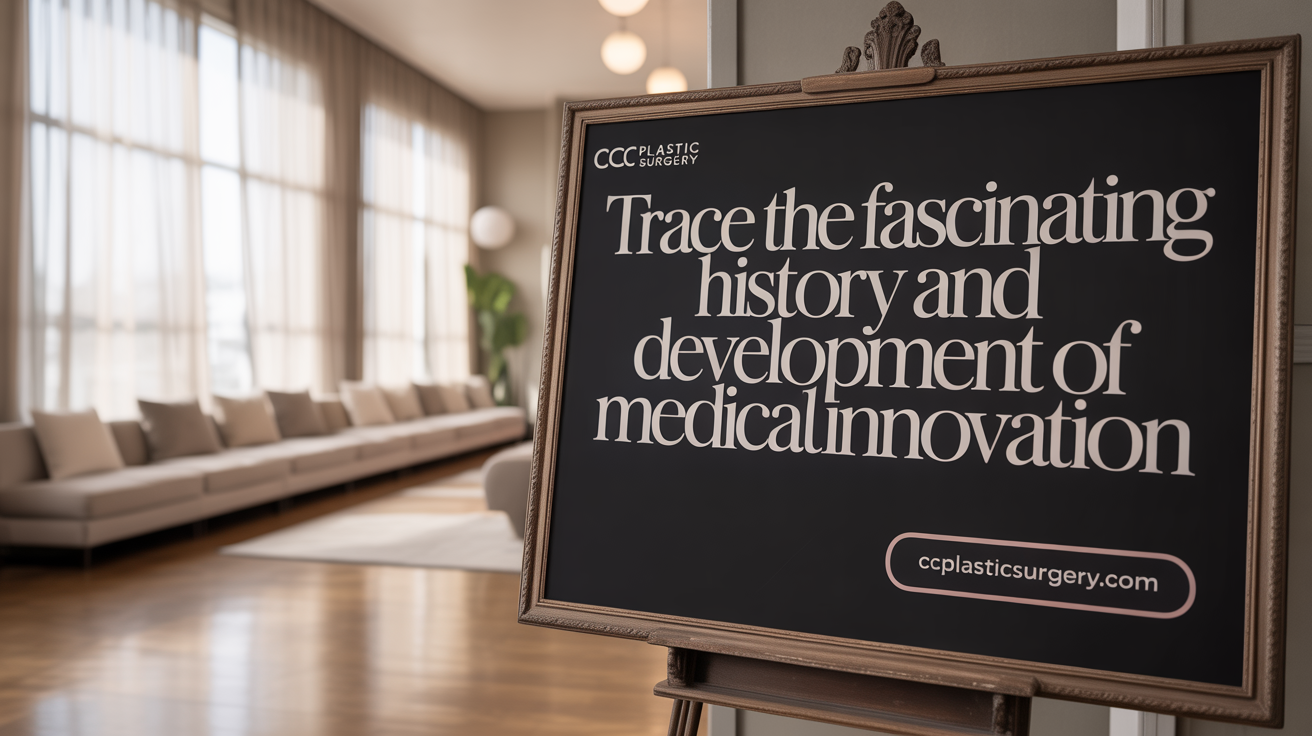
January 1, 2026
How to Reduce Double Chin: how to reduce double chin without surgery
Discover how to reduce double chin with expert-backed strategies, from exercises and lifestyle changes to the latest cosmetic options.
Aug 15, 2025

Plastic surgery is a specialized medical field dedicated to the restoration, reconstruction, and alteration of the human body to improve both function and appearance. This surgical specialty encompasses a broad range of procedures from repairing birth defects and trauma-related injuries to enhancing aesthetic qualities. Originating from the ancient Greek term 'plastikos,' meaning to mold or shape, plastic surgery blends artistic skill and advanced medical techniques. This article provides a comprehensive overview of what plastic surgery entails, its history, types, procedural scope, surgeon qualifications, risks, benefits, and more.

Plastic surgery is a specialized branch of surgery dedicated to restoring, reconstructing, and sometimes enhancing the human body's form and function. Its primary focus is on repairing defects caused by illness, trauma, congenital anomalies, or developmental issues. The term 'plastic' originates from the Greek word 'plastikos,' meaning to mold or give form, reflecting the field's emphasis on shaping tissue.
This surgical discipline covers a wide array of procedures, including treatments for skin conditions like scars, burns, and skin cancers, as well as facial and body reconstruction. Cosmetic enhancements such as facelifts, breast surgeries, and liposuction are also integral parts of the practice. While reconstructive efforts aim to restore normal appearance and function, cosmetic procedures are performed to improve aesthetic qualities and boost confidence.
Plastic surgeons are extensively trained professionals, often certified by governing boards like the American Board of Plastic Surgery. Their skills span multiple organ systems, working collaboratively with other specialists for comprehensive patient care. Overall, plastic surgery combines science and artistry to address both functional impairments and aesthetic goals.
The breadth of plastic surgery is vast, encompassing both reconstructive and cosmetic interventions. Reconstructive procedures aim to repair or rebuild damaged or abnormal structures. This includes correcting birth defects such as cleft lip and palate, treating traumatic injuries like burns or fractures, and performing cancer reconstructions for areas like the face, breast, and skin.
In addition to addressing defects, plastic surgeons restore or improve body functions, often utilizing advanced techniques like microsurgery, tissue grafting, and flap procedures. They treat a variety of conditions such as limb deformities, congenital anomalies, and post-surgical or post-trauma defects.
On the cosmetic side, plastic surgeons perform elective surgeries designed to enhance appearance. Common procedures include facelifts, rhinoplasty, breast augmentation and reduction, and body contouring. These treatments focus on improving symmetry, proportion, and aesthetic appeal.
Performed across diverse organ systems and tissue types, plastic surgery also involves specialized fields like craniofacial, hand, microsurgery, and burn surgery. Its scope extends from delicate facial procedures to complex reconstructions of the extremities and torso. The field's versatility allows it to serve patients with a wide range of medical needs, combining technical skill with artistic sensibility to achieve optimal outcomes.

The term "plastic surgery" is derived from the Greek word "plastikos," meaning to mold, shape, or form. It emphasizes the sculptural nature of the field, focusing on reshaping body parts through various surgical procedures. The term was first used in the 19th century by German surgeon Karl Ferdinand von Graefe to describe operations like rhinoplasty, which involves sculpting tissue to restore or enhance appearance. Despite common misconceptions linking the name to synthetic plastics, it has no connection to the plastic material itself. Instead, the word underscores the art of dilating and reconstructing biological tissues to restore form and function. The roots of plastic surgery trace back to ancient civilizations such as India and Egypt, where early techniques aimed at repairing injuries and congenital deformities. Over time, the practice evolved with technological advances, turning into a sophisticated blend of reconstructive and cosmetic procedures.
Plastic surgery spans over 3,000 years of history. The earliest documented efforts originated in ancient Egypt, India, and Greece, where methods were developed to reconstruct facial features like noses and ears. The Indian surgeon Sushruta, often called the father of plastic surgery, performed early reconstructive procedures around 600 BC, pioneering techniques that laid the groundwork for future innovations. During the Roman era, surgeons carried out cosmetic procedures, including repairing damaged ears, indicating an early focus on both functional and aesthetic improvements. The modern development of plastic surgery was propelled during the 19th and 20th centuries, especially by surgeons such as Sir Harold Gillies, who advanced reconstructive techniques during World War I and II in response to wartime injuries. These efforts marked a turning point, leading to significant technological strides including skin grafting, tissue transfer, and microsurgery. In recent decades, technological innovations like laser treatments, liposuction, 3D imaging, and regenerative medicine have transformed the field further. Society's perception of plastic surgery has also evolved, with increasing acceptance and integration of advanced techniques reflecting cultural shifts and advancements in medical science. Overall, plastic surgery has transitioned from simple reconstructive efforts to a comprehensive specialty that encompasses both restoring and aesthetic procedures, driven by technological progress and changing societal attitudes.

Plastic surgery procedures fall broadly into two main categories: reconstructive and cosmetic (aesthetic) surgery.
Reconstructive surgery is performed to repair or restore body parts affected by injury, birth defects, or disease. Examples include cleft lip and palate repair, breast reconstruction post-mastectomy, craniofacial surgeries, limb salvage, and burn repair. These procedures aim to restore form and function, often improving the patient’s quality of life.
On the other hand, cosmetic surgery focuses on enhancing a person's appearance and boosting self-confidence. Common procedures include facelifts, rhinoplasty (nose reshaping), breast augmentation and reduction, liposuction, eyelid surgeries, and tummy tucks. These procedures are usually elective and centered around improving aesthetic proportions or symmetry.
Both types may involve surgical and nonsurgical techniques, depending on the targeted area and patient goals. For example, nonsurgical options include Botox injections, dermal fillers, chemical peels, and laser treatments. The range of procedures covers areas such as the face, breasts, abdomen, and limbs.
Reconstructive and cosmetic surgery differ primarily in purpose and necessity.
Reconstructive surgery aims to repair or reconstruct areas damaged by trauma, congenital anomalies, cancer, or disease. Its goal is to restore both appearance and function, often improving the patient’s quality of life. These procedures are generally covered by insurance if they are deemed medically necessary.
Cosmetic surgery, however, is performed to improve or reshape normal, healthy body parts for aesthetic reasons. Its main focus is enhancing appearance, symmetry, and proportion. As an elective procedure, cosmetic surgery usually is not covered by insurance and is paid out-of-pocket.
While both types of surgery use similar techniques—such as skin grafting, tissue transfer, or flap surgery—their motivations are distinct. Reconstructive surgery addresses deformities and functional issues, whereas cosmetic surgery seeks to beautify and refine features.
Most plastic surgeons are trained in both areas, but certification might specify their primary focus. The fundamental difference is that reconstructive procedures primarily aim to restore or improve function, often following injury or illness, while cosmetic procedures primarily aim to improve aesthetics without necessarily addressing a medical problem.
Plastic surgery offers a wide range of procedures aimed at enhancing appearance or repairing defects. Popular surgeries include breast augmentation, which increases breast size using implants, and breast lift procedures that raise and reshape sagging breasts. Body contouring is often achieved through liposuction, removing excess fat, or tummy tuck (abdominoplasty), which tightens abdominal muscles and skin. Facial surgeries like rhinoplasty reshape the nose, while eyelid surgery (blepharoplasty) corrects droopy eyelids. Facelifts and brow lifts help combat signs of aging, restoring a youthful appearance. Other frequently performed procedures include breast reduction for oversized breasts, buttock lifts, facial implants, and skin resurfacing techniques such as dermabrasion, chemical peels, and soft tissue fillers. Non-surgical options like Botox, dermal fillers, and laser skin treatments are also commonly used to improve aesthetics without surgery.
Plastic surgery addresses numerous medical conditions, from birth defects such as cleft lip and palate to traumatic injuries and burns. It is instrumental in treating skin cancers like melanoma and lip cancer, removing tumors, and reconstructing affected areas. Patients with deformities from illnesses, accidents, or infections benefit from reconstructive procedures that restore function and appearance. Examples include facial paralysis repairs, scar revisions, and tissue grafts. It also offers solutions for functional problems such as breathing issues from nasal obstructions or sleep apnea. Additionally, plastic surgery can correct congenital anomalies like microtia (small ears) or craniosynostosis (skull deformities). Overall, it aims not only to improve appearance but also to restore safe, normal body functions.
Many patients wonder about discomfort associated with plastic surgery. While procedures can cause some pain, advancements in techniques have significantly reduced this. Immediately after surgery, discomfort, swelling, and bruising are common but tend to improve within days or weeks. Pain management strategies, including medications, ice packs, and supportive garments, help minimize discomfort. Surgeons aim to make procedures as comfortable as possible by utilizing minimally invasive techniques and effective anesthesia. Most patients find that pain during recovery is manageable, and serious complications or pain are rare with proper care.
Plastic surgery offers substantial benefits such as improved appearance, restored function, and increased confidence. It can lead to a higher quality of life and sometimes improve health, especially in reconstructive cases. However, risks include infection, abnormal scarring, blood clots, nerve damage, and anesthesia complications. Recovery times vary: minor procedures might require only a few days of rest, while more complex surgeries could need several weeks to months for full healing. During recovery, patients may experience swelling, bruising, and discomfort, which typically diminish over time. Proper post-operative care and realistic expectations are crucial for satisfactory results. Consulting qualified, board-certified surgeons ensures that risks are minimized and outcomes align with patient goals.
| Procedure Type | Common Examples | Benefits | Recovery Duration |
|---|---|---|---|
| Reconstructive | Cleft palate repair, burn reconstruction | Restores function, repairs defects | Weeks to months |
| Cosmetic (Aesthetic) | Rhinoplasty, breast augmentation, facelifts | Enhances appearance and confidence | Days to several months |
| Non-surgical treatments | Botox, fillers, laser therapy | Quick results, less downtime | Days |
This comprehensive overview captures what to expect from common plastic surgery procedures, the conditions they treat, pain levels, and recovery insights. Always consult with experienced, board-certified surgeons to determine the best options tailored to individual needs.
Plastic surgeons must undergo extensive education and specialized training to practice safely and effectively. The process begins with earning a medical degree—either an MD (Doctor of Medicine) or DO (Doctor of Osteopathic Medicine)—from an accredited medical school.
Following medical school, aspiring surgeons must obtain licensure by passing licensing exams such as the United States Medical Licensing Examination (USMLE) or the Comprehensive Osteopathic Medical Licensing Examination (COMLEX). Once licensed, they typically enter residency training in plastic and reconstructive surgery.
Residency programs usually last six years in integrated pathways or five years in general surgery plus three additional years specializing in plastic surgery through independent pathways. All training occurs in approved medical institutions across the U.S. or Canada.
To achieve board certification, surgeons must pass comprehensive written and oral exams administered by the American Board of Plastic Surgery (ABPS). Certification involves demonstrating proficiency in a broad range of procedures and adhering to strict professional standards. Surgeons must also participate in continuous education and re-certification every ten years to maintain their credential.
Many plastic surgeons further specialize by completing fellowships in areas such as hand surgery, microsurgery, craniofacial surgery, or cosmetic surgery. During these fellowships, they perform a minimum number of procedures to gain expertise.
Overall, the path to becoming a qualified plastic surgeon combines rigorous education, supervised training, examination, and ongoing professional development, ensuring they are well-equipped to deliver safe, effective care.
Plastic surgery is a dynamic and essential surgical specialty combining medical expertise with artistic precision to restore function and enhance appearance. Rooted in a rich history stretching back millennia, it has evolved into a sophisticated field encompassing both reconstructive and cosmetic procedures. Certified plastic surgeons undergo rigorous training to ensure safe and effective treatments for a wide array of medical conditions and aesthetic desires. While the benefits of plastic surgery can be profound, including improved quality of life and self-esteem, patients must carefully weigh the associated risks and recovery considerations. As technology and techniques continue to advance, plastic surgery promises ever more refined outcomes and expanded possibilities to meet the diverse needs of patients worldwide.

January 1, 2026
Discover how to reduce double chin with expert-backed strategies, from exercises and lifestyle changes to the latest cosmetic options.

January 1, 2026
Understanding Breast Surgery: What Patients Should Know About Procedures and Recovery

January 1, 2026
Comprehensive Insights Into Body Contouring: Procedures, Benefits, and Patient Care